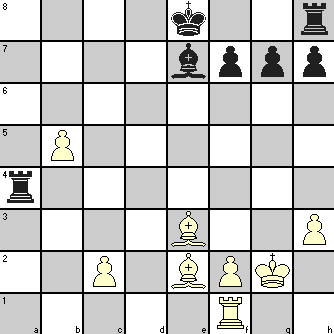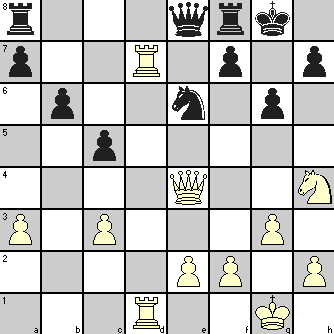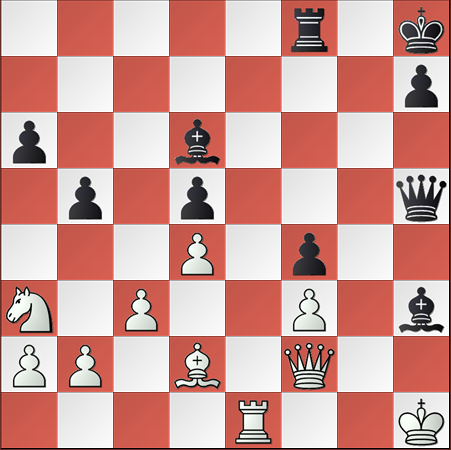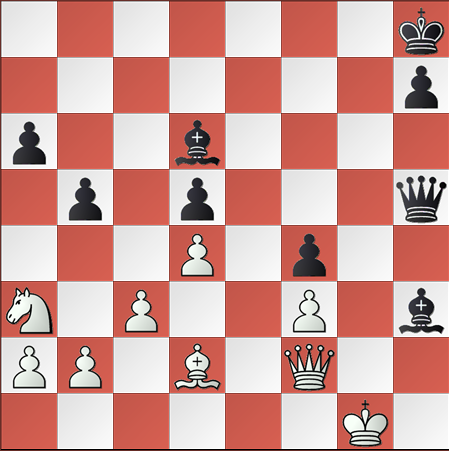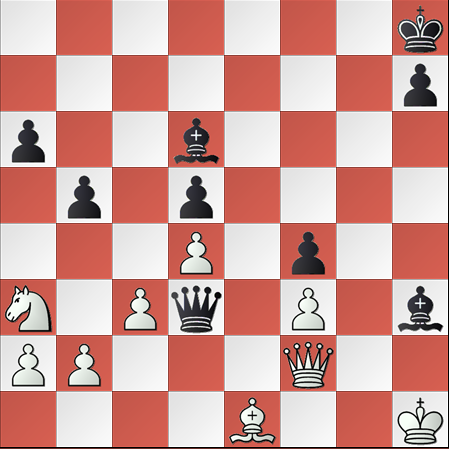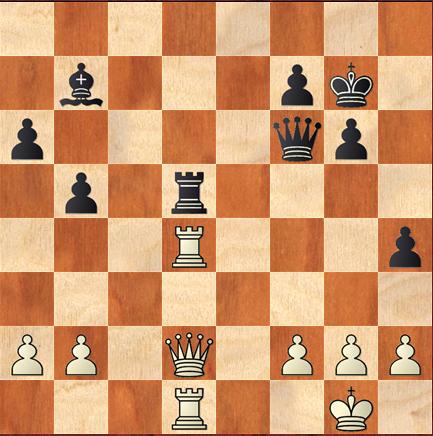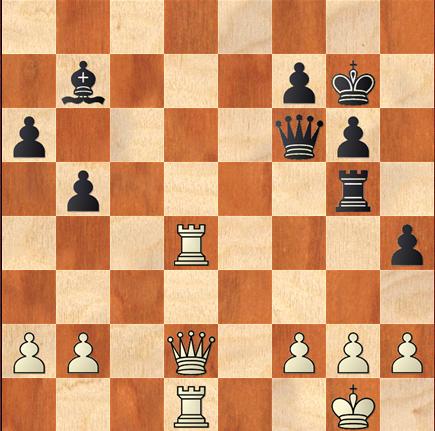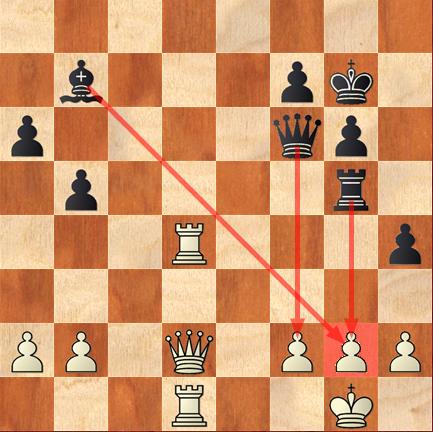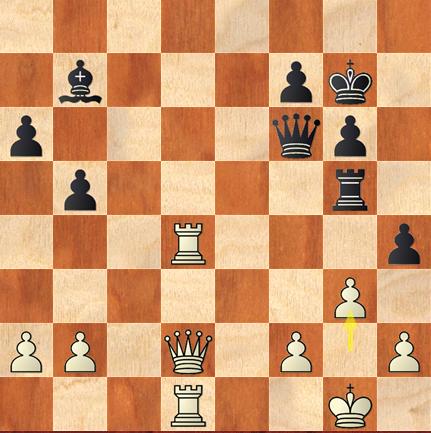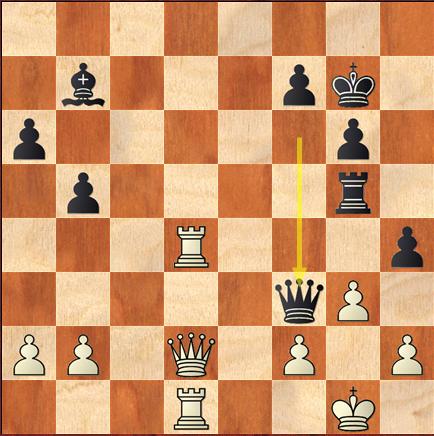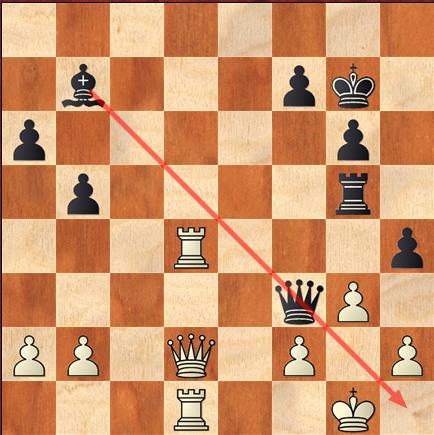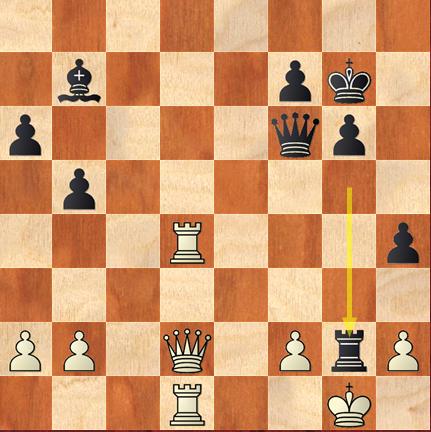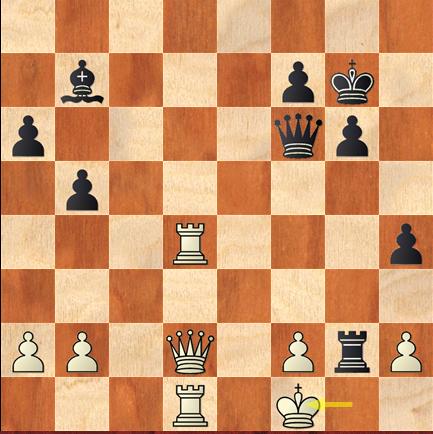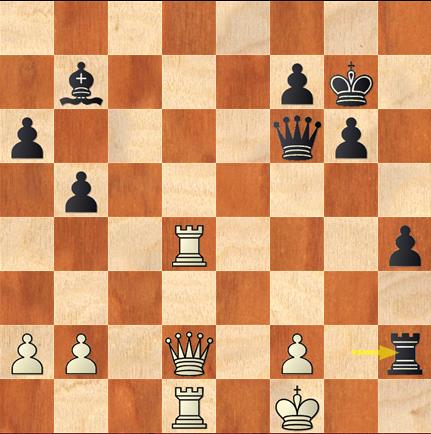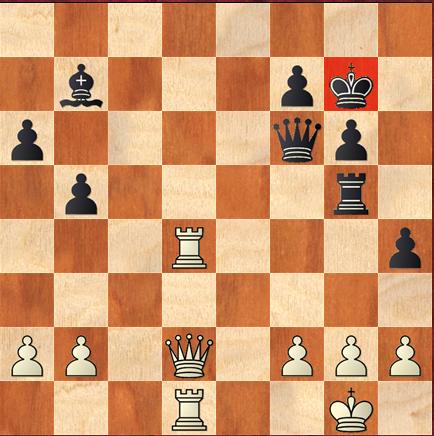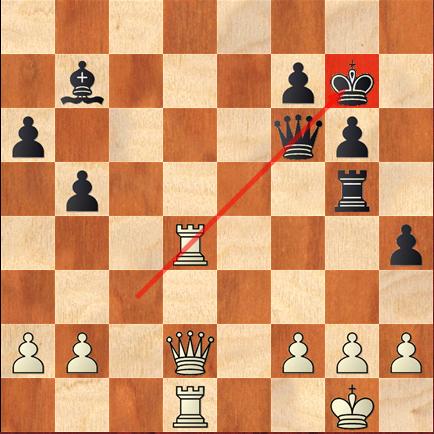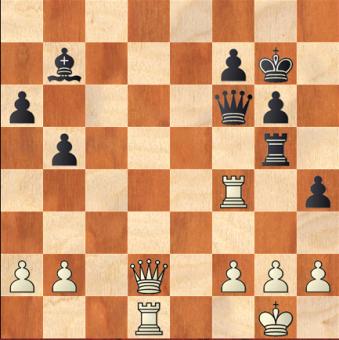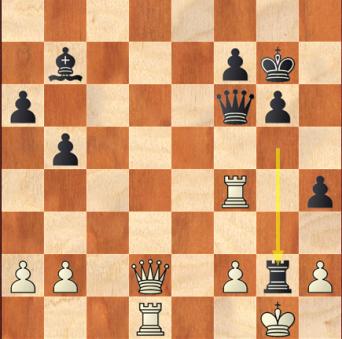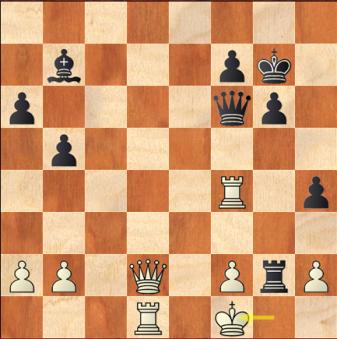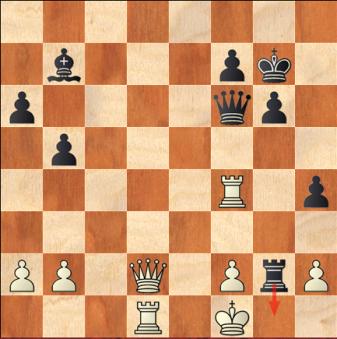Continuing from Do not panic – Tactics are present even if they are not visible – Part 2
Now the position after 31 moves is as follows :
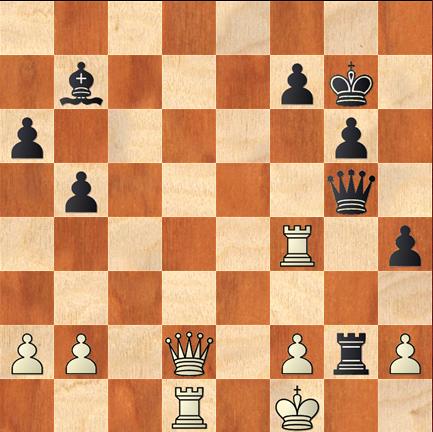
White to Move
Now, it is the turn of White to move. Black has initiated the attack and is in the mood of exchanging pieces and launch an all-out attack on White King. As has been reiterated in our series of articles on tactics, assessing the vulnerability of opponent attack and exploring the possibility of checks and captures gain prominence in an attack or counter attack.
We have already seen that the black King at g7 is vulnerable. The next option would be to explore the possibilities for checks. What are the options available for White to threaten the Black King with check?
Option #1
White can threaten the Black King with check by moving the rook at f4 to f7. The Black King will capture the rook. Then, the Queen at d2 can be moved to d7 to threaten the Black King. In response, the Black might move its Queen at g5 to f7.
a.Rf7+ Kxf7
b.Qd7+ Qf7
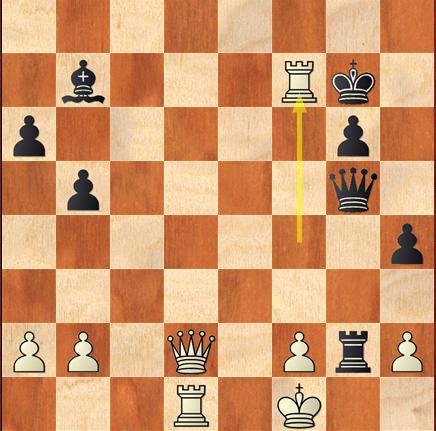
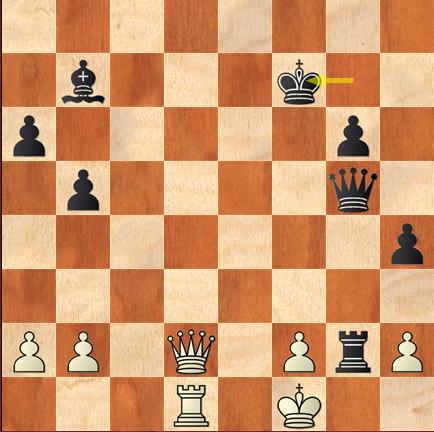
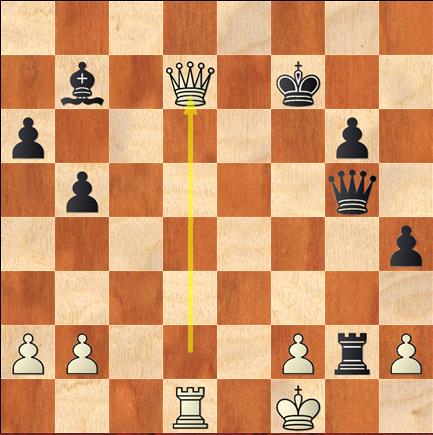
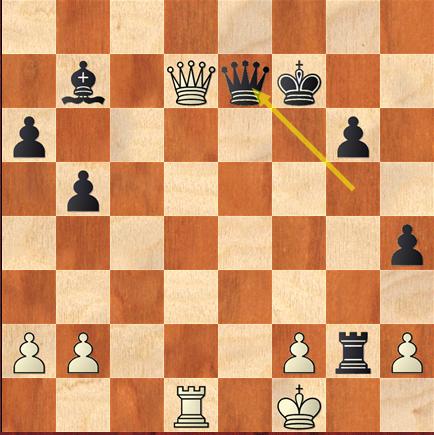
No more options are there for the White to continue exert pressure by threatening the Black King with checks. So, the option#1 does seem to be promising enough.
Option #2
We have already seen that the diagonal a1 to h8 can be exploited for threatening the Black King placed at g7.
a.Qc3+ Kf8
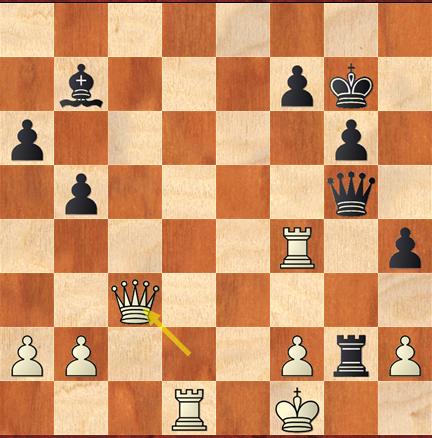
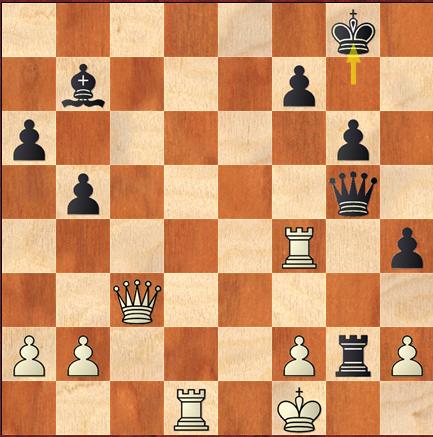
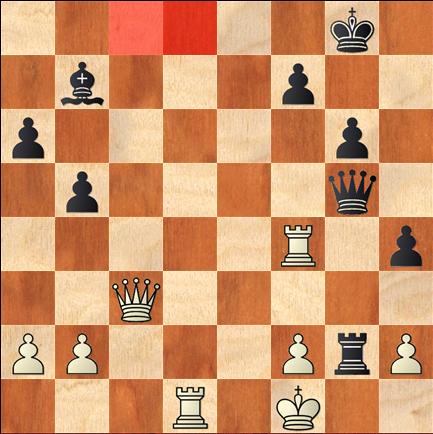
The Black Queen at d2 might be moved to c3 to threaten the Black King with a check. In response, the black King might move to the back rank at g8. Surprisingly, you find that there are no more opportunities for check on Black King as the squares c8 or d8 from where the checks might become possible are covered by the Black bishop at b7 and the Queen at g5.
This option is also not much encouraging enough.
Option #3
One of the essential aspects of tactics in attacks or counter-attacks is to explore all possible options and foresee the possible response from the opponent. One should always look for the best possible alternative, which will open up new horizons and make it easier for adequate and strong response to the Black’s move.
Having explored two options, one should not lose heart or leave the advantage to the opponent and wait for his counter moves,
a.Rd8+ Qxd8
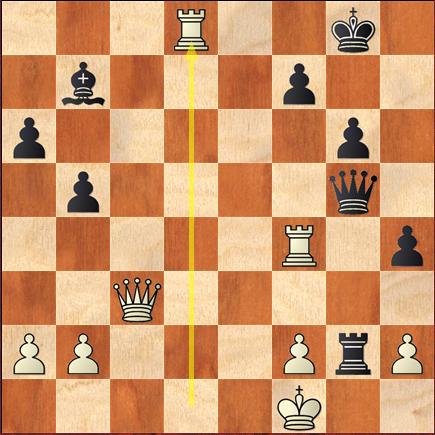
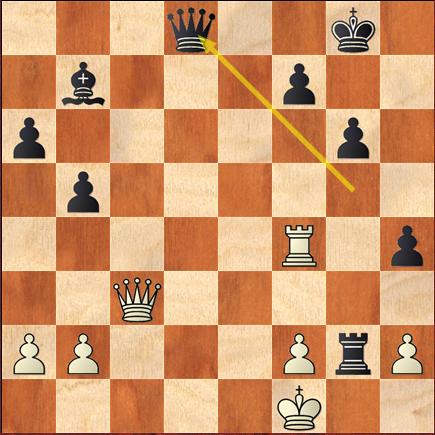
This option is also not very promising enough.
Option #4
What are the other possible options for threatening the Black King with check?
a.Qd4+ Kf8
b.Qd8+ QxQ
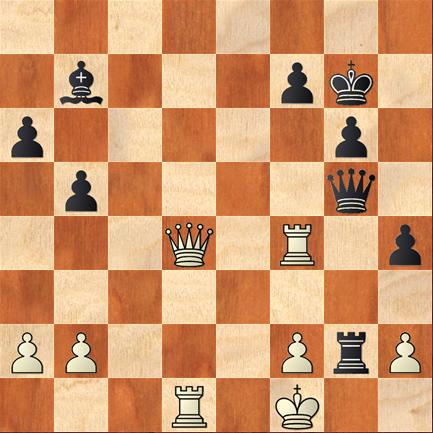
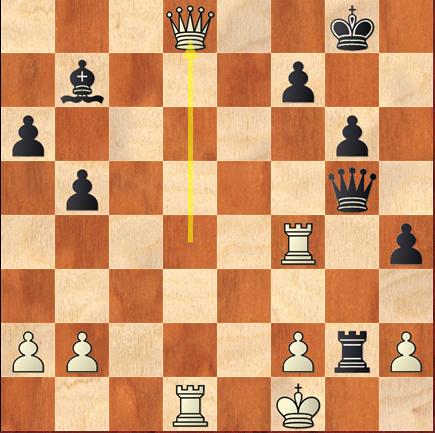
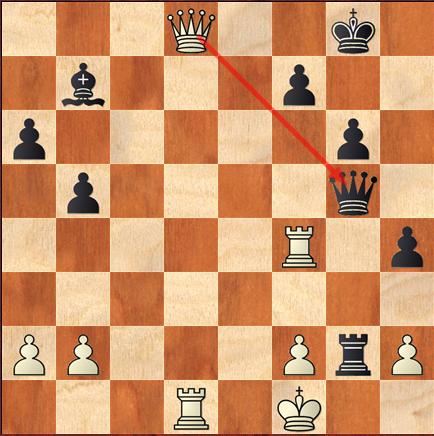
This will result in exchange of queens and nothing concrete leading to checkmate will arise with this option.
What will happen if the Black King, instead of moving to the back rank, decides to move sideward to h7?
Option #4a
a.Qd4+ Kh7
b.Rf7+ (This seems to be promising as the King has no other
option but to move to h6 and then the Queen at d4
can move to h8 and say “checkmate”)
Option #4b
If, in response to Qd4+, the black King moves to h6, then, Qh8+ will be checkmate. As such the move by Queen from d2 to d4 seems to be very promising.

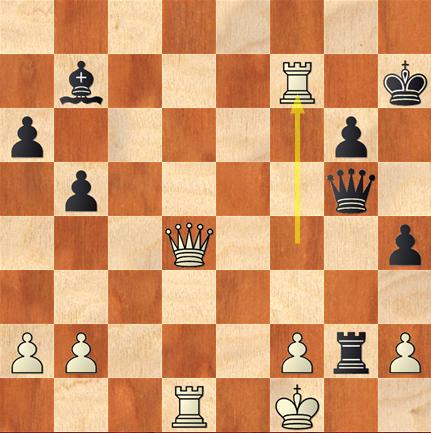
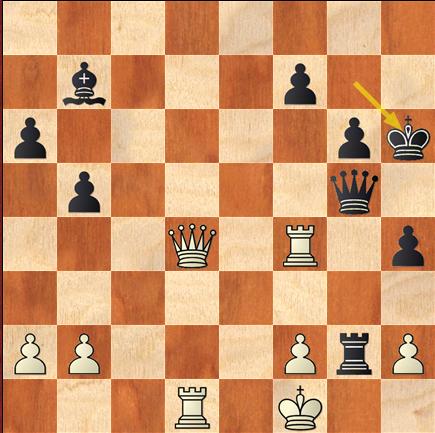
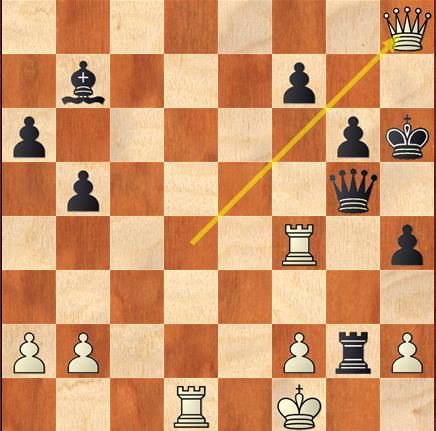
Having evaluated all possible options, the White finally decides to go with the option#4 discussed above which seems to be more promising than other three options.
32. Qd4+ …..
32. …… f6 The best possible option for Black is to move the pawn as any
move might become vulnerable as we have seen in option#4
The position after move 32 will be as follows:
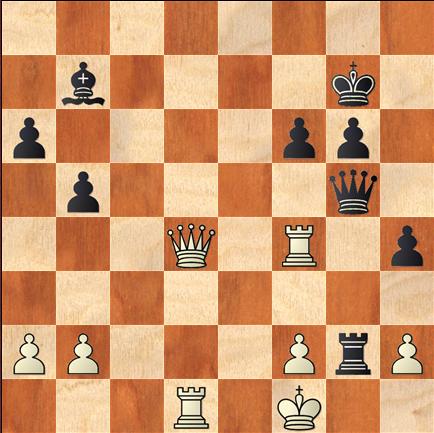
White to Move
Contrary to White’s calculation that Black King, which is under threat, will be moved, the resilient black moved the pawn to defend its King and kept the King unchanged at g7. However, you might see that the 7th rank is opened up and the Black King is vulnerable for attack from the 7th rank. What would be the options for White to consider?
Option #1
a.Qd7+ Kh6
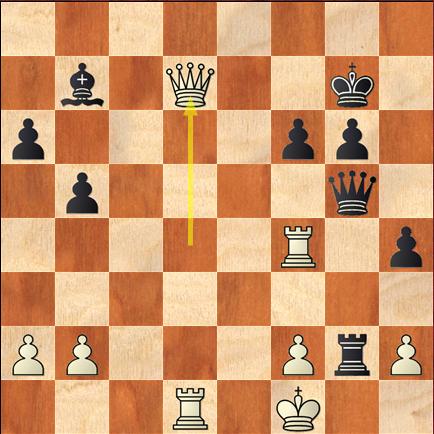
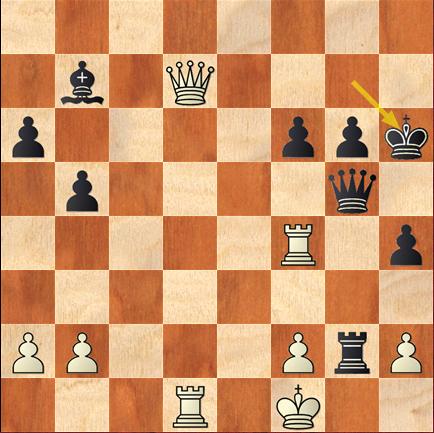
b.Qxb2 ….. As there is no possibility for enforcing check on Black king
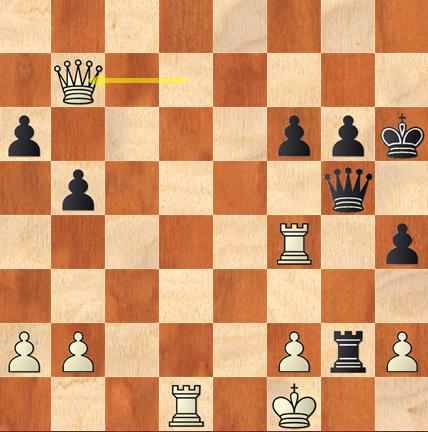
Now, it is the turn of Black to move, and having given some leeway in that there is no threat of check on its King, the Black might continue to begin its attack.
….. Rg1+
a.Ke2 Rxd1
b.Kxd1 QxR





Now, you see that after a series of exchanges, White’s position will become weaker in that the Black has one extra pawn. As such, this option is not feasible.
Option#2
What might be the other option that will ultimately lead to checkmate and does not allow any leeway for the black pieces to continue its attack.
Again looking at the options for threatening the Black King with check, White might find that Qxf6+ will be an option, sacrificing the Queen in the process.
a.Qf6+ Qxf6


Despite losing the Queen, White turns out to be in an advantageous position. A check by moving rook at d1 to d7 will force the black King to move out of g7 and thus expose the Black Queen for capture by rook at f4. Sacrifices are also part of the tactics and have equal importance. The value of the piece is immaterial and it is the positional advantage that get first preference than the value of the pieces.
Having foreseen the various alternatives, White has decided to capture the pawn at f6 and threaten the Black King with check.
33. Qxf6+ Qxf6
34. Rd7+ Kh6
35. Rxf6 Black resigns



This is yet another example of how tactics can convert a literally losing position to a winning one.
The position of White King was precarious and Black was launching an all-out attack, probably out of desperation to win the game in the knock-out stage to remain in the contest. For White, a victory would be a passage for the next round.
Tactics, in this context, has been necessitated out of sporting behavior and the urge to move up in a knock out tournament.
This beautiful example will once again emphasize the importance of tactics. There is no reason for panic at any point of time. Counter attacks of these sort does require critical analysis of all possible alternatives. Not only should the counter attacks be strong and decisive, but it should also be timely and should not allow the opponent, who is launching an all-out attack, is allowed an opportunity to implement his attacking strategy.
